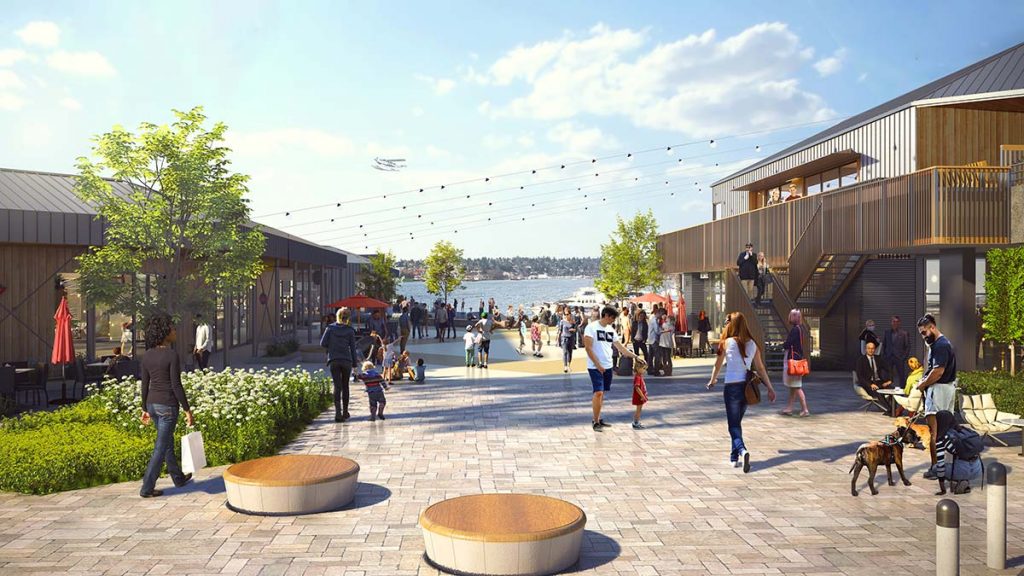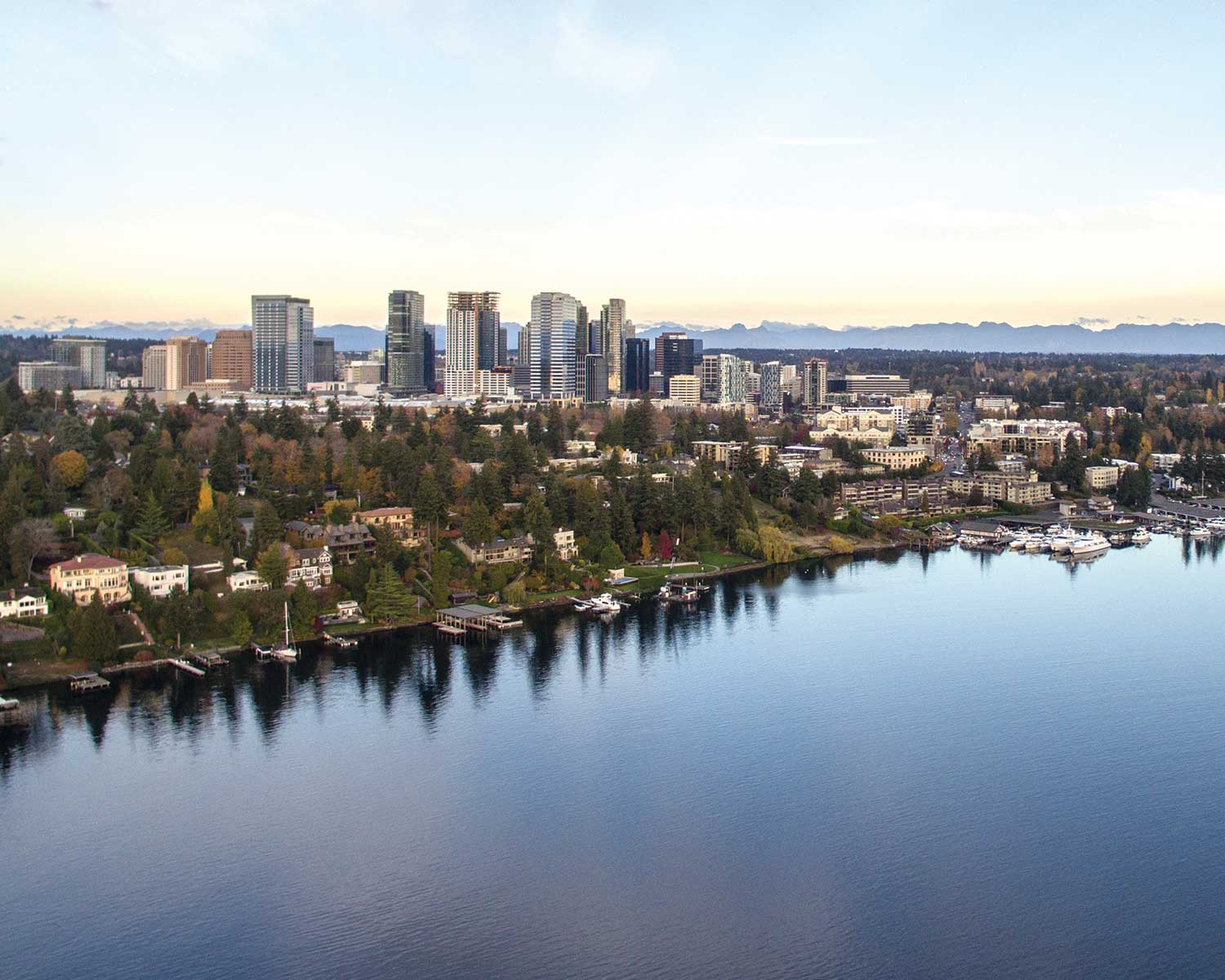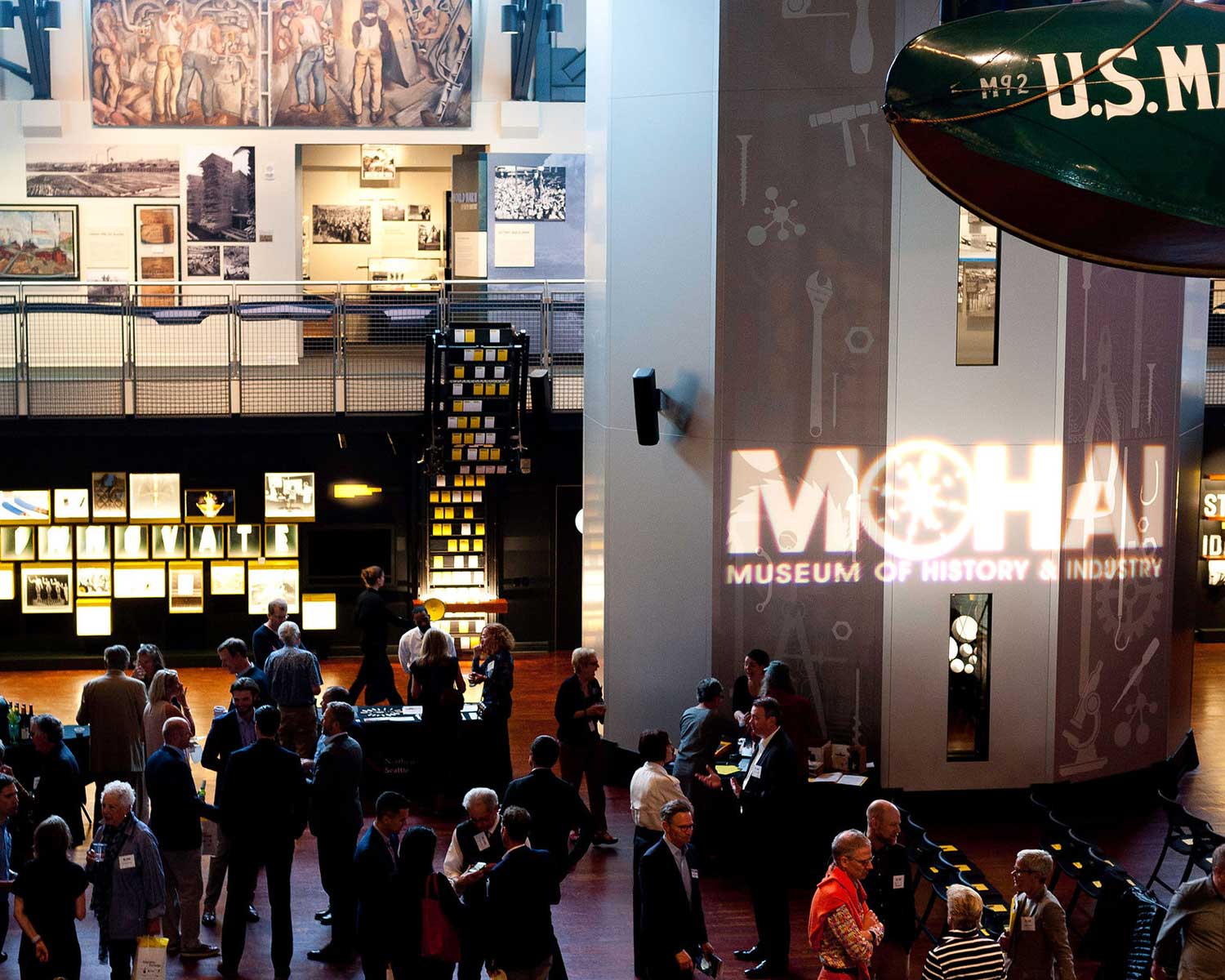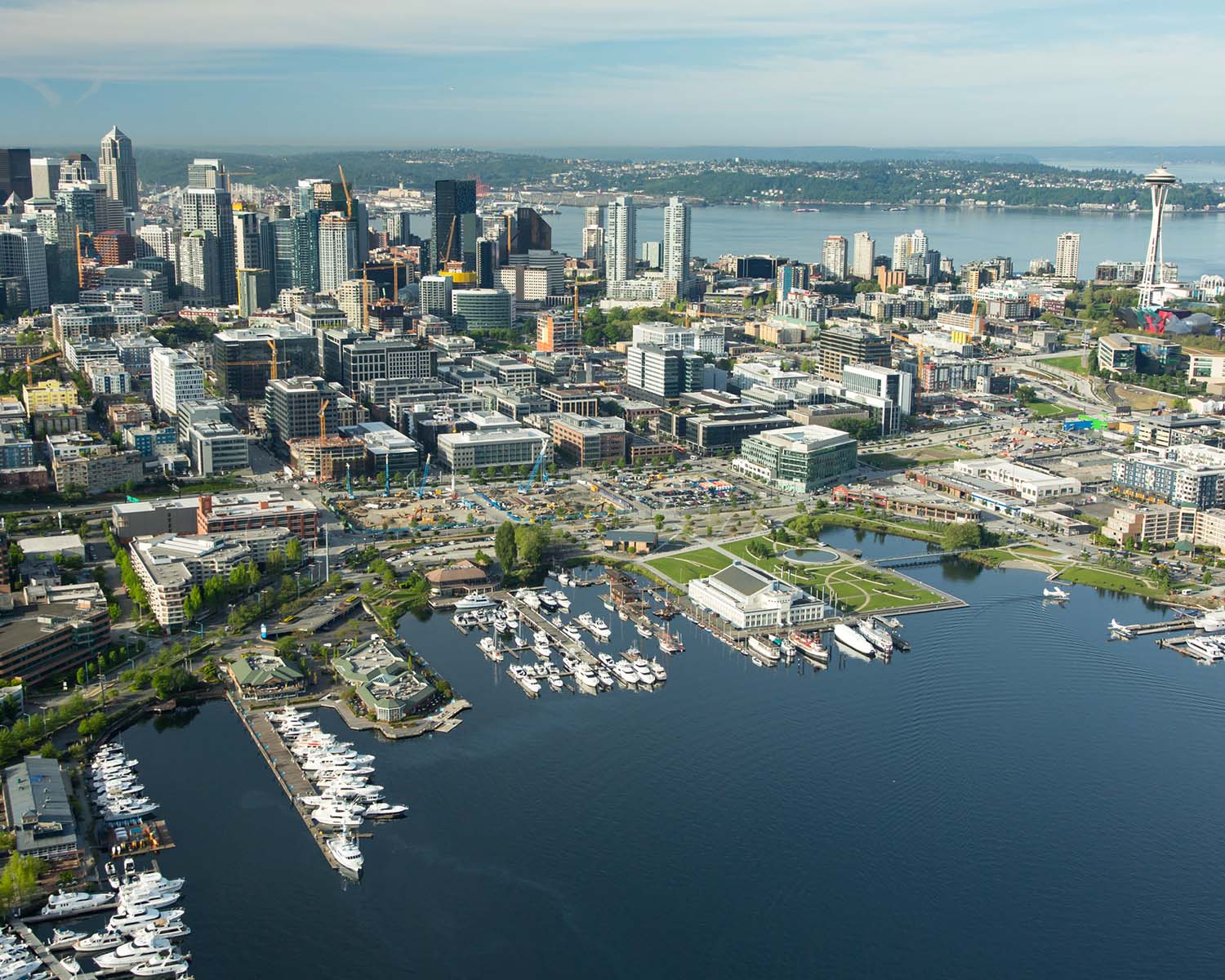
The office has been a cornerstone of the workplace experience and a longtime driver of neighborhood activity. COVID-19’s emergence has challenged this notion, the physical boundaries of office, our ability to exchange ideas, and the concept of work-life balance.
Just like the pandemic has been a reset for many on an individual level, it has given the commercial real estate community a chance to reflect on the ways in which the office needs to be reimagined to foster creativity and connection while integrating with new ways of life.
After the initial shock of the pandemic settled in, and people started to become comfortable with the idea of a “new normal,” the perceived benefits of working in an office changed. As the lines between personal and professional life came together under one roof during the pandemic, a more evolved and enhanced version of in-person work emerged.
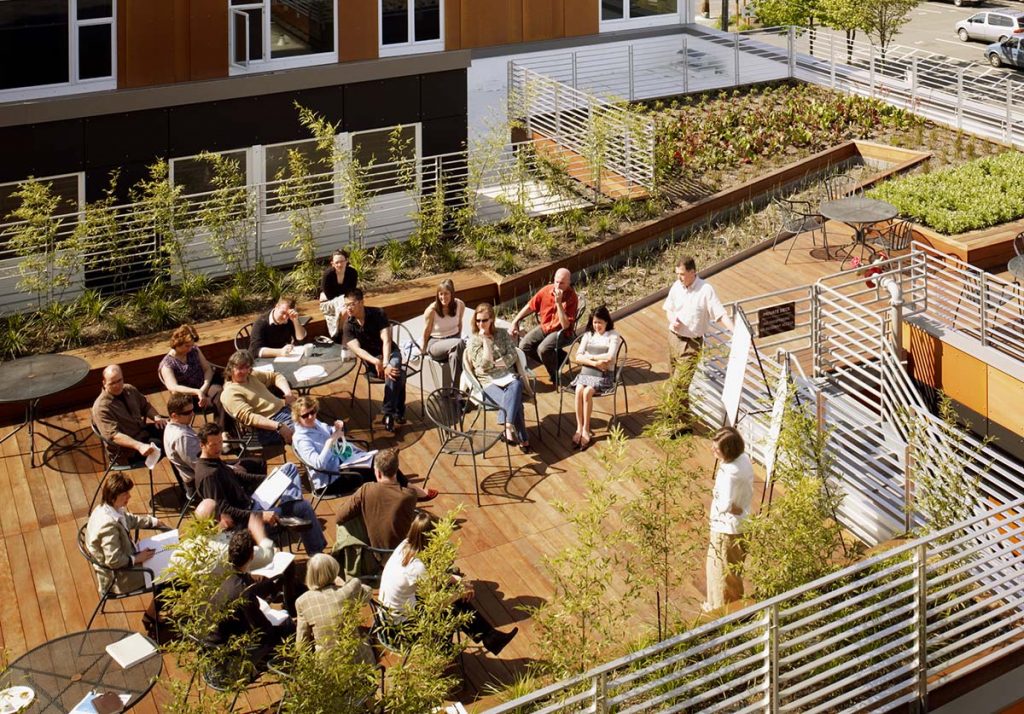
Importance of the Office Environment
Remote and hybrid work forces a different relationship between employees and employers and forges a new dynamic for the workplace. Most employers agree that the office environment is key to bringing their employees together and creating cohesion, culture, and unity. Virtual team building tends to be less engaging and does not produce the same dynamic as sharing space with colleagues. For younger employees working in large metropolitan areas like Seattle, work is an important social setting where professional relationships are cemented, and friendships are made.
The office environment is key to creating cohesion, culture, and unity
The flexibility of working at least one day-a-week from home is inspiring companies to make changes to their office model. As employees slowly return to the office, employers are carefully examining how the physical space is being utilized and how it accommodates the new reality of work. As a result, landlords are noticing increasing preferences toward Class A spaces with smaller footprints, increased amenities, and ample outdoor spaces, as well as office spaces with flexible configurations to allow for team collaborating and independent work so employees feel time in the office is uniquely productive and time well spent.
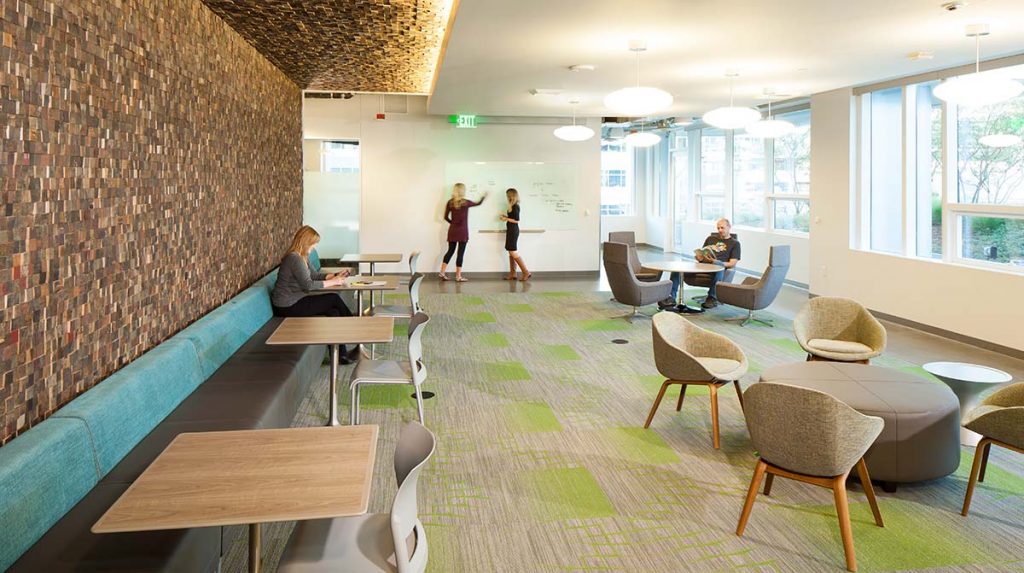
Our development philosophy has always focused on creating spaces of value where people want to work, play, and engage. We make every effort to involve neighborhood stakeholders in the planning and development process so that we can understand a project’s impact to the block and the ones surrounding it to then create a space that will truly benefit the community. Working without a masterplan and taking on one project at a time has allowed South Lake Union to grow organically and has enabled the influence of each company, small business, and individual that plants roots in the neighborhood to contribute to its identity.
Employers can put this approach into practice by understanding that, by today’s standards, the office is not just an office. This will be a key determinant in the amount of space companies lease and a defining pillar of recruitment and retention strategies. Offerings within an office’s two to three block radius have the potential to be just as essential for an employee as building amenities such as bike storage, rooftop gardens, and gyms.
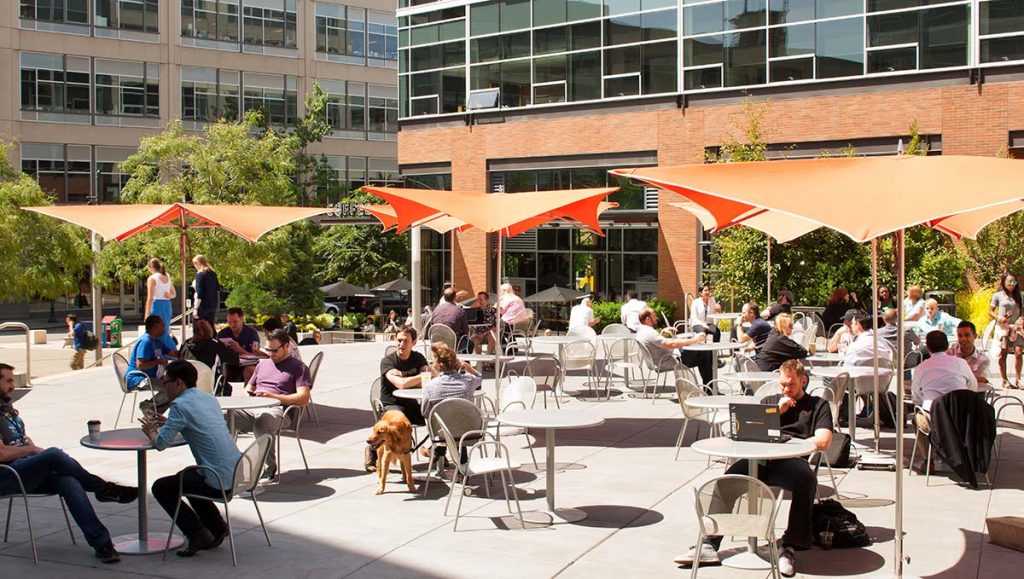
Urban Districts as Destination Zones
Retail can play a central role in the evolution of work environments through the reimagination of urban districts as destination zones. Retail clusters located in and around office campuses that feed, entertain, supply, and service employees during their lunch breaks and after hours are crucial. Cafes and coffee shops, for example, can act as a bonus space to facilitate the kind of socialization and interaction employees hope to foster on days spent in the office.
As employees have more autonomy over their schedules, unofficial three-day weekends and blurring between weekdays and weekends could become more common. Areas like South Lake Union—whose diverse mix of shopping, dining, entertainment, and services not only supports neighborhood commercial and residential activity, but also draws in visitors from surrounding areas looking for a change of scenery—could benefit from this change. South Lake Union’s own destination zone is taking shape with food, beverage, and entertainment concepts, such as Flatstick Pub and Tapster, both of which are established along Fairview and Westlake. The completion of Lake Union Piers will further define the neighborhood’s lakefront retail atmosphere by creating new opportunities for restaurants and retail businesses.
Retail clusters facilitate the kind of socialization and interaction office workers seek
Adapting this new era of office allows us the wonderful opportunity to reimagine our understanding of the office as solely a place to do work and to accept employees’ new lifestyles and shifts in values. Our mission remains the same: we strive to create meaningful commercial office spaces that are safe, productive, and comfortable and that foster creativity and connection for workers and neighborhoods. The office is constantly evolving, and we will continue to evolve along with it.
